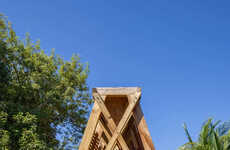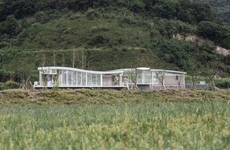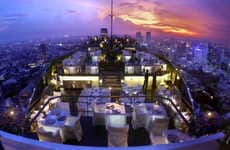
The Chinese Pavilion at the Venice Biennale 2012 References Nature
Alexandra Serrano — September 5, 2012 — Art & Design
References: labiennale.org & dezeen
Titled ‘Originaire,’ the Chinese Pavilion at the Venice Biennale 2012 boasts references to the origins of nature.
The pavilion boasts a central installation by Shao Weiping that is ethereal in its reference to the infinity. The airy form ominously looms over the pavilion. Also featured is a piece that has tiny depictions of both Beijing and a galaxy view of the planet Mars. The images are placed on square magnets that create an extra feature of mobility inviting users to move the images around, as conceptualized by Tao Na.
The two final aspects to the pavilion is by Xu Dongliang, who has projected prime numbers, and by Wang Yun who filled the garden outside the space with 36 mirrored cubes to represent the names of planets. The pavilion is a show of architectural artistry and a stunning representation of the work as we know it.
The pavilion boasts a central installation by Shao Weiping that is ethereal in its reference to the infinity. The airy form ominously looms over the pavilion. Also featured is a piece that has tiny depictions of both Beijing and a galaxy view of the planet Mars. The images are placed on square magnets that create an extra feature of mobility inviting users to move the images around, as conceptualized by Tao Na.
The two final aspects to the pavilion is by Xu Dongliang, who has projected prime numbers, and by Wang Yun who filled the garden outside the space with 36 mirrored cubes to represent the names of planets. The pavilion is a show of architectural artistry and a stunning representation of the work as we know it.
Trend Themes
1. Nature-inspired Installations - The use of nature-inspired installations in art exhibitions provides a disruptive innovation opportunity to create immersive and ethereal experiences for viewers.
2. Interactive Art - The integration of interactive elements in art installations, such as movable magnets, offers a disruptive innovation opportunity to engage and involve viewers in the artistic experience.
3. Architectural Artistry - The combination of architectural design and artistic expression in pavilions presents a disruptive innovation opportunity to create visually stunning and conceptually impactful structures.
Industry Implications
1. Art Exhibitions - Art exhibitions can incorporate nature-inspired installations and interactive elements to enhance the overall viewer experience and drive visitor engagement.
2. Interior Design - Interior designers can draw inspiration from nature and architectural artistry to create unique and immersive spaces that evoke a sense of wonder and exploration.
3. Event Planning - Event planners can incorporate nature-inspired and interactive art installations to create captivating and memorable experiences for attendees, adding a unique touch to their events.
1.4
Score
Popularity
Activity
Freshness























